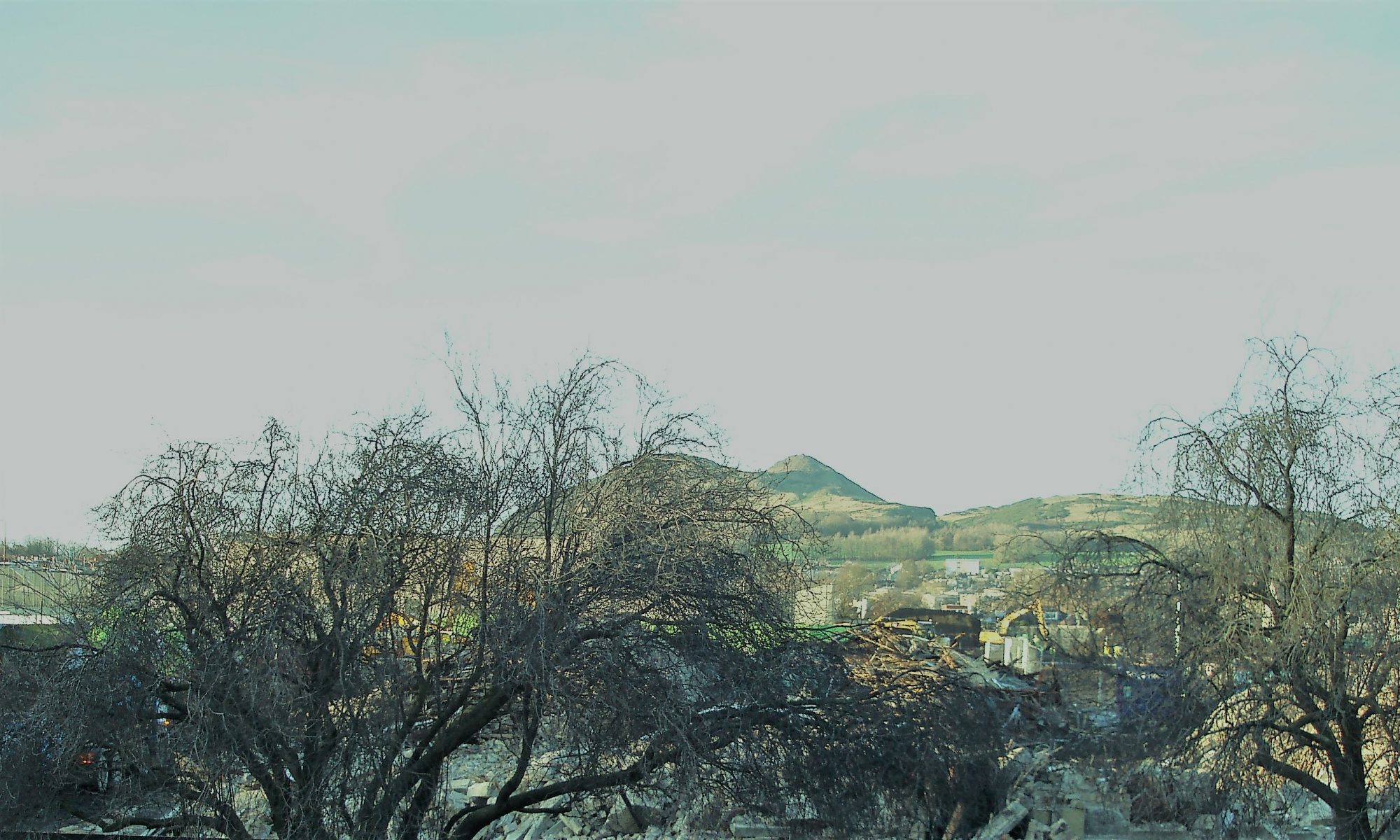The name has not been used in living memory for any part of Edinburgh. It was chosen by the Duddingston and Craigentinny Neighbourhood Partnership after a substantial public consultation. Many of the names suggested would have continued the long-running local dispute over Portobello Park so the Council added in its own suggestion from the bank of approved names for streets that it holds. The Neighbourhood Partnership was keen to move on from times of conflict so a brand new name was welcome.
So where did the name come from? This takes us into ancient and rather vague history best described in a Wikipedia article about Duddingston – a territory which used to cover the whole of Holyrood Park right down to the edge of Portobello where it frontiers with Musselburgh.
The estate wherein Duddingston Village now lies was first recorded in lands granted to the Abbot of Kelso Abbey by David I of Scotland between 1136–47, and is described as stretching from the Crag (from Craggenmarf, an old name for Arthur’s Seat) to the Magdalene Bridge. This land grant included the settlement known by the name of Treverlen or Traverlin, in the western part of it; this being the oldest known name of the village and estates that eventually became known as Duddingston.
There are several possibilities exist for the etymology of “Treverlen”.
“tref + gwr + lên” meaning “place of the learned man”
“tref + y + glyn” with lenition following the definite article, meaning “place of the learned women”
“tre + war + lyn” meaning “the farm at or on the loch”
“traefor llyn” meaning “settlement by the lake (loch) of reeds and/or rushes”[
All these names originate in the Celtic Brythonic languages, which pre-date the use of the Gaelic or Saxon tongues in Scotland, suggesting that they may go back to the time of some of the earliest settlements on Arthur’s Seat. The last two names, in particular, fit well as a possible name for the Celtic crannog settlement which stood in the southernmost corner of Duddingston Loch.
The last Celtic owner of the Treverlen estates is said to have been Uviet the White who owned it from at least 1090 onwards. By 1128, though, at the founding of Holyrood Abbey, the lands of Arthur’s Seat seem to have become divided between the Royal Demesne and the estates of Treverlen belonging to Uviet the White. For confirmation of what passed in 1128 at the forming of Holyrood Abbey and the passing of the lands to Kelso Abbey, we can look to the later “Charter of Confirmation, Granted to the Monks of Kelso of King Malcolm IV”. Malcolm IV of Scotland inherited the throne from his grandfather David I of Scotland, and was perhaps called upon to confirm many such gifts of land in case of later disputes. This he did, in the above-mentioned charter, confirming the previously given entitlement of
Traverlin, with its due bounds, as Vineth fully and freely possessed and enjoyed it, with all the easements of the adjoining strother (march), which is called Cameri; and the Crag of the same village
to Kelso Abbey. Malcolm goes on to state that in his grandfather’s time Alfwyn (perhaps the saxonised form of Uviet, or one of his descendants), Abbot of Halyrude (Holyrood Abbey) and Ernald, Abbot of Kelso, came to an agreement concerning a dispute between them over The Crag, which allowed for the lands of The Crag and Traverlin to pass to the church of Kelso, in exchange for the ten-pounds-lands they had in “Hardiggasthorn, near Northamtun”.
The name was superseded during the thirteenth and fourteenth centuries by “Dodinestun” from “Dodin’s Estate”. This name change came about just after the lands and estates were given to Kelso Abbey by David I. The Abbey quickly feued the estate to one Dodin de Berwic, evidently, from his name, an Anglo-Norman knight. Apparently, then, it was Dodin who changed the name of the settlement, as by 1150 he was referring to himself as “Dodin of Dodinestoun”. (Dodin’s toun or farm place). This last may be slightly misleading, though, as there was a toft (a homestead with attached arable land) near Berwick-Upon-Tweed, also referred to as Dodin’s Town, with which he is quite likely to have had connections.[ However, it seems likely that the names are connected through branches of the same Norman family. Thereafter the village is often, though not always, referred to as Duddingston, with quite a wide range of spellings. For instance, from heraldic sources we are told that in May 1290 Edward I granted a protection against proceedings for debts to William de Dodingstone, burgess of Edinburgh. Also, with quite a different spelling, but six years later, we are told the name is that of a locality near Edinburgh, and Eleyne de Duddynggeston, of that county, swore fealty to Edward I.
The kirk which was built on the newly gifted lands went by the name Duddingston Kirk, but the name Treverlen still survived into the next century as the parish name, being confirmed as such in a list of 13 parishes belonging to Kelso in 1200, which leads one to suspect there had been a kirk on the site previously.”
Clearly someone had a great time assembling that story – whether it is true or not matters little. Like other parks in Edinburgh, in time it will acquire its own name.
